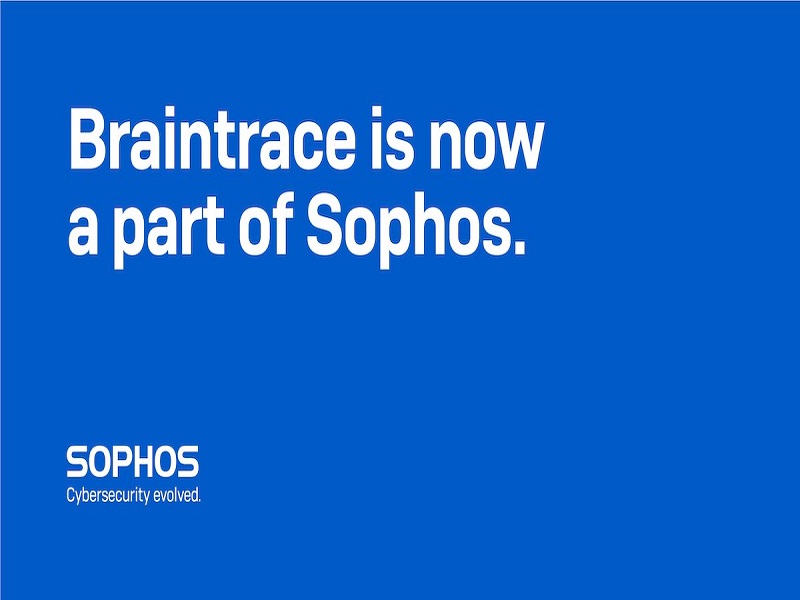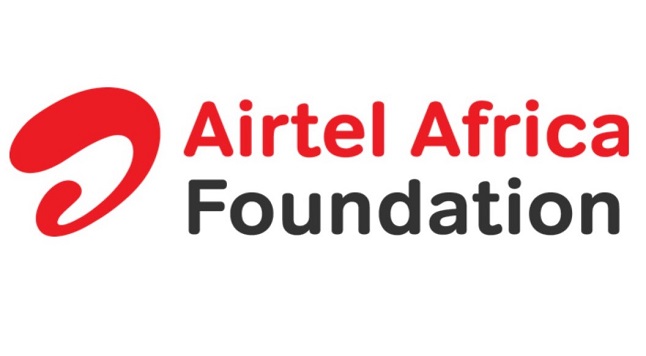Telecom
Sophos Acquires Braintrace to Boost Adaptive Cybersecurity Ecosystem

Sophos, a global leader in next-generation cybersecurity, today announced that it has acquired Braintrace, further enhancing Sophos’ Adaptive Cybersecurity Ecosystem with Braintrace’s proprietary Network Detection and Response (NDR) technology.

Braintrace’s NDR provides deep visibility into network traffic patterns, including encrypted traffic, without the need for Man-in-the-Middle (MitM) decryption.
Located in Salt Lake City, Utah, Braintrace launched in 2016 and is privately held.
As part of the acquisition, Braintrace’s developers, data scientists and security analysts have joined Sophos’ global Managed Threat Response (MTR) and Rapid Response teams.
Sophos’ MTR and Rapid Response services business has expanded rapidly, establishing Sophos as one of the largest and fastest-growing MDR providers in the world, with more than 5,000 active customers.
Braintrace’s NDR technology will support Sophos’ MTR and Rapid Response analysts and Extended Detection and Response (XDR) customers through integration into the Adaptive Cybersecurity Ecosystem, which underpins all Sophos products and services.
The Braintrace technology will also serve as the launchpad to collect and forward third-party event data from firewalls, proxies, virtual private networks (VPNs), and other sources.
These additional layers of visibility and event ingestion will significantly improve threat detection, threat hunting and response to suspicious activity.
 Joe Levy, chief technology officer, Sophos
Joe Levy, chief technology officer, Sophos
“You can’t protect what you don’t know is there, and businesses of all sizes often miscalculate their assets and attack surface, both on-premises and in the cloud. Attackers take advantage of this, often going after weakly protected assets as a means of initial access. Defenders benefit from an ‘air traffic control system’ that sees all network activity, reveals unknown and unprotected assets, and exposes evasive malware more reliably than Intrusion Protection Systems (IPS),” said Joe Levy, chief technology officer, Sophos. “We’re particularly excited that Braintrace built this technology specifically to provide better security outcomes to their Managed Detection and Response (MDR) customers. It’s hard to beat the effectiveness of solutions built by teams of skilled practitioners and developers to solve real world cybersecurity problems.”
Sophos will deploy Braintrace’s NDR technology as a virtual machine, fed from traditional observability points such as a Switched Port Analyzer (SPAN) port or a network Test Access Point (TAP) to inspect both north-south traffic at boundaries or east-west traffic within networks.
These deployments help discover threats inside any type of network, including those that remain encrypted, serving as a complement to the decryption capabilities of Sophos Firewall.
The technology’s packet and flow engine feeds a variety of machine learning models trained to detect suspicious or malicious network patterns, such as connections to Command and Control (C2) servers, lateral movement and communications with suspicious domains.
Since Braintrace built its NDR technology specifically for predictive, passive monitoring, its engine also provides intelligent network packet capture that IT security administrators and threat hunters can use as supporting evidence during investigations. The novel NDR analysis and prediction technique is patent pending.
According to Gartner, “compared with traditional approaches, where malicious behavior is defined ahead of time in the form of prebuilt signatures and detection engines inspecting traffic looking for matches, NDR takes a different approach. Instead of only inspecting traffic against a list of known bad payloads or behaviors, NDR also focuses on looking for unknown patterns in the network traffic, calculating a probability as to whether that anomaly is malicious.”
Gartner further notes that, “the machine learning algorithms that are at the core of many NDR products help to detect anomalous traffic that is often missed by other detection techniques. The optional automated response capabilities help to offload some of the workload for incident responders. The threat hunting functionality provides valuable tools for incident responders.”
“NDR is critical to successful threat hunting. Braintrace’s competitive differentiation is its unique NDR technology that our MDR analysts leveraged for finding, interrupting and remediating cyberattacks,” said Bret Laughlin, CEO and co-founder of Braintrace. “With our own NDR technology, the team responds faster and more accurately because of the real-time, automated visibility and threat verification they have into encrypted traffic. We built Braintrace’s NDR technology from the ground up for detection and now, with Sophos, it will fit into a complete system to provide cross-product detection and response across a multi-vendor ecosystem.”
 British cybersecurity software and hardware company Sophos Group plc’s Silicon Valley office in Santa Clara, California by Gettyimages
British cybersecurity software and hardware company Sophos Group plc’s Silicon Valley office in Santa Clara, California by Gettyimages
Braintrace’s NDR technology is a key component for defending against cyberattacks today and in the future. Sophos research demonstrates how adversaries aggressively and constantly change tactics to evade detection and execute their attacks.
Braintrace’s technology helps uncover malicious C2 traffic from malware, such as ColbaltStrike, BazaLoader and TrickBot, as well as zero-days, that could lead to ransomware and other attacks.
This visibility allows threat hunters and analysts to pre-empt any potential ransomware attack, including recent strikes by REvil and DarkSide.
Sophos plans to introduce Braintrace’s NDR technology for MTR and XDR in the first half of 2022.
Telecom
MoMo PSB Brings Relief to UNILAG Students with Ultra-Cheap Bus Fares

MoMo Payment Service Bank (MoMo PSB), a fintech subsidiary of MTN Nigeria, has announced a partnership with Ogata Electric Vehicles to provide subsidised bus rides of ₦10 per fare to students of the University of Lagos (UNILAG).

MoMo PSB
The initiative, unveiled on Thursday in Lagos, is aimed at easing transportation costs for young Nigerians, particularly students, as part of MoMo PSB’s broader commitment to financial inclusion and digital accessibility.
MoMo PSB, which provides millions of Nigerians with secure financial services including transfers, savings, card services, bill payments and wallet solutions, said the transport subsidy reflects its mission to improve everyday life by reducing the cost of essential services.
The company explained that the partnership with Ogata Electric Vehicles would not only make commuting more affordable for students but also promote sustainable mobility through the use of electric buses.
Officials of MoMo PSB noted that the initiative is designed to bring “good cheer” to the UNILAG community, ensuring students can access safe, reliable and cost-effective transport while focusing on their education.
Telecom
MTN Nigeria Launches Unlimited 5G Broadband Plans to Boost Digital Inclusion

MTN Nigeria has launched its Unlimited Broadband Data plans powered by 5G technology, a move the telecoms giant says will tackle long-standing challenges of capped data limits, high costs and unstable connectivity faced by internet users across the country.

MTN Nigeria
Egerton Idehen, Chief Broadband Officer of MTN Nigeria, said the new product was designed to support high-demand users including streamers, gamers, households and businesses requiring uninterrupted connectivity.
“We’re building a broadband experience for everyday life. For content creators, remote workers, gamers, students and households. Our focus is on speed, reliability, low latency, and affordability.
“Broadband is designed to deliver seamless connectivity that empowers Nigerians to thrive in the digital economy,” Idehen said.
The plans, available in speed-based variants of 50Mbps and 100Mbps, promise lightning-fast speeds and ultra-low latency to address issues of lag and buffering. MTN said the packages would also provide affordable and flexible options to cater to diverse economic segments.
New customers who purchase a 5G router will enjoy a welcome bonus of unlimited data for the first 30 days, allowing them to experience the service before committing to long-term use.
The company explained that the initiative was part of its broader commitment to digital inclusion, enabling Nigerians to access stable connections for virtual meetings, large file transfers, online learning, high-definition streaming and professional gaming.
Customers can subscribe to the Unlimited Broadband Plans by dialling 4611#, using the MyMTN app, MTN eShop, MTN website, or visiting authorised retail outlets nationwide.
Telecom
Airtel Africa Foundation Opens Undergraduate Scholarship Portal in Nigeria

The Airtel Africa Foundation has opened applications for its Undergraduate Tech Scholarship in Nigeria, inviting first-year university students with strong academic potential to apply for financial support aimed at accelerating their studies in technology and related fields.

The scheme provides full tuition, accommodation support, and essential study materials for eligible 100-level students. It forms part of the Foundation’s F.E.E.D. agenda, which promotes Financial Empowerment, Education, Environmental Protection, and Digital Inclusion, with a focus on creating pathways for talented young people who face financial barriers.
Airtel Nigeria CEO, Dinesh Balsingh, encouraged students to take advantage of the opportunity. He noted that, “Education is one of the most powerful tools for national development,” adding that “as an organisation, Airtel is determined to build a platform for aspiring young Nigerians to learn, innovate and lead in the country’s expanding technology landscape.”
Applications are open to students pursuing courses such as Information Technology, Computer Science, Software Engineering, Data Science, Cyber Security, Artificial Intelligence, and other ICT-related disciplines at participating universities: University of Lagos, University of Nigeria Nsukka, Ahmadu Bello University, University of Benin, Obafemi Awolowo University, University of Ilorin, and Tai Solarin University of Education.
Dr Segun Ogunsanya, Chairman of the Airtel Africa Foundation, said the scholarship demonstrates the organisation’s commitment to nurturing Africa’s next generation of digital leaders. “Young Africans are brimming with talent and ambition. What many need is a fair chance to pursue their education without financial pressure. This scholarship reflects our belief that investing in their growth will strengthen communities, empower families, and expand the continent’s digital future,” he said.
Applicants must be enrolled in 100-level, have scored at least 230 in JAMB, and hold a minimum of five credits in WAEC, including English and Mathematics, in a single sitting. Required documents include Joint Admissions and Matriculation Board (JAMB) results, university admission letter, West African Examination Council (WAEC) certificate, student identity card, and academic transcript or university results.
The Foundation encourages qualified students across the listed institutions to apply and position themselves for a stronger start in the technology sector. Applications can be submitted at candidate.scholastica.ng/schemes/airtelfellowship2025.

 E-Financial2 days ago
E-Financial2 days agoCBN Rejigs Financial Inclusion Strategy to Boost Economic Growth

 E-Financial2 days ago
E-Financial2 days agoSEC Urges IST to Freeze all CBEX Bank Accounts in Nigeria

 News2 days ago
News2 days agoFG to Use Digital Economy Initiatives to Curb Corruption Among Youth

 E-Business2 days ago
E-Business2 days agoFinancial Sector Faced AI, Blockchain and Organised Crime Threats in 2025 – Report

 Broadcasting2 days ago
Broadcasting2 days agoEnd of an Era as Multichoice Delists from JSE After Canal+ Takeover

 Broadcasting2 days ago
Broadcasting2 days agoGlobal South Alliance Launches $72,000 Datafication and Democracy Fund to Support 2026 Research Projects

 Telecom2 days ago
Telecom2 days agoCOUCH 2025 Grand Finale Highlights Student Breakthroughs, Secures Government Pledge for University Research Commercialization

 Telecom2 days ago
Telecom2 days agoGoogle Invests $2.1m to Boost Nigeria’s AI Development


























